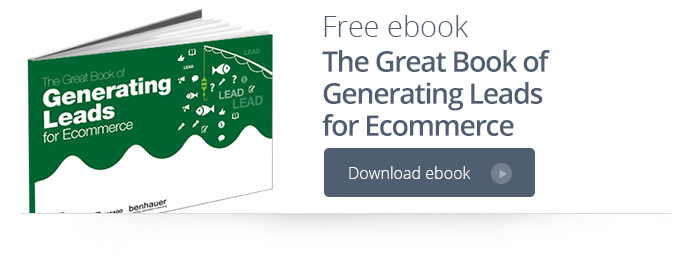The procedure of completing online shopping is one of the most important moments in the buying process. Its design has a key impact on the conversion rate and the number of interrupted transactions. Despite careful design of the online store, using dynamic content such as pop-ups, recommendation frames, or personalized banners *, a mediocre checkout is able to destroy all these efforts. But that’s not all. If a contact, carefully carried from one step to another, will lose their interest, then the budget spent on campaigns (AdWords, Facebook Ads **) can be considered wasted. After adding knowledge about the impulsive nature of shopping ***, you can get a full picture of checkout status throughout the purchase process.
* Read more about implementing and leveraging dynamic content on a webpage
** Learn more about Facebook Ads
*** Read more about the impulsive nature of shopping and how to use it
While designing (or “sealing”) the checkout flow you should think of adopting the One Thing per Page approach.
What is the One Thing per Page approach
To put it simply, One Thing per Page is about breaking down the whole procedure into smaller steps and placing them on separate pages. For example, instead of requesting a complete set of personal data, shipping address and invoice data in one large form, you can group this data and divide it into 3 separate stages.
Case study
Adam Silver, author of Better Form Design: One Thing Per Page – Case Study mentions that he repeatedly used the described approach. Always with good effect. In 2014, working on the checkout procedure of Just Eat, he suggested spreading the last step of ordering takeout in three steps. This simple action resulted in the 2 million additional orders per year.
Why it works
The One Thing per Page approach gives you quite spectacular results. There are several reasons:
- Simple tasks – dozens of personal coaches have persuaded their clients to break down their long-term goals into smaller ones and completing them until they reach the main goal. The exact same principle works here. Instead of overwhelming the customer with the complex form, it is better to have him fill it slowly, step by step. This way they won’t feel confused and lost. This practice also reduces the risk that their attention will be dispersed.
- A better sense of control over the process for the customer – gradual process of completing the data gives customers the impression that they’re in charge of the entire process. They can go back to correct or add something at any time. Also, if they forget to complete a mandatory field, they don’t need to browse the entire form to locate it. They find the area in a split second.
- Better grip on the purchase process and leakage detection – breaking down the checkout process into multiple forms and multiple pages makes it much easier to monitor customer behavior and spot the moment when they break the flow and abandon the website. Data collection and its analysis is a task for the marketing automation platform – it’s one of the platform’s main purposes.The process of improving these problematic steps where people are missing before the end of the transaction should be supported by A / B / X tests (they can be purchased as a separate module in our AppStore!). Their mechanism is simple: you show visitors two slightly different forms (important – test only one thing at a time) and comparing their performance. Once you know which element discourages clients from going further, you simply turn it into a more user-friendly one.
- Visible progress – it’s the part of human nature – we like to see the effects of our actions. Using shorter forms makes customers feel satisfied (often subconsciously) at the end of each stage, which in turn motivates them to take the next step.
- Easy to use – it’s much easier to browse smaller pages that don’t require infinite scrolling. They load faster, do not consume as much data and are easier to use.
- Supporting Mobile First – I recently wrote (in the post on Mobile User Experience) how important are mobile users for your strategy. Today, as many as 44% of online shopping visits come from smartphones (I mentioned that in this article). Applying the One Thing per Page approach is definitely a nod in their direction – it’s much easier to fill out a short form and move on to the next step on the smartphone’s screen than to cope with an elaborate questionnaire.
- Easier to implement – this is simple maths: shorter and simpler forms are easier to design and upload. And if something goes wrong along the way, it’s much easier to locate such a bug and fix it.
- Conversion growth – if the checkout procedure is easier and more user-friendly, then naturally more people will pass it completely. Thus, breaking down the last purchase step into several steps results in an increase in conversion rate and leads indirectly to a decrease in SG&A.
Do you use One Thing per Page approach? Share your experience with us. Join the discussion on Facebook!
Also, learn how to generate leads for your Ecommerce!


 Follow
Follow
















